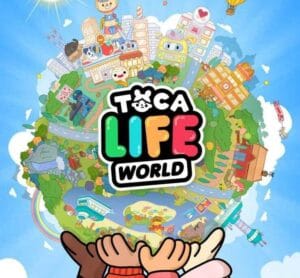‘Elysium’ Revisited: How Neill Blomkamp’s 2013 Sci-Fi Thriller Almost Delivered a Bleaker, More Cynical Ending
Popular Now
 Valorant
Valorant
 Counter-Strike 2
Counter-Strike 2
 R.E.P.O
R.E.P.O
 PUBG Mobile
PUBG Mobile
 Gacha Club
Gacha Club
 Grand Theft Auto V
Grand Theft Auto V
 Brawl Stars
Brawl Stars
 League of Legends
League of Legends
 The Legend of Zelda
The Legend of Zelda
 NBA 2K24
NBA 2K24 
Ten years ago, the cinematic landscape was rocked by the release of Neill Blomkamp’s highly anticipated follow-up to ‘District 9,’ the visually stunning and socially charged sci-fi movie, ‘Elysium.’ Starring Matt Damon as Max Da Costa, the 2013 film presented a stark, dystopian vision of a world divided: the ultra-wealthy living in luxury on the orbiting space station Elysium with access to instantaneous medical care (Med-Bays), while the rest of humanity struggles on a ravaged, overpopulated Earth. While the finished film concludes on a note of universal healthcare triumph, the narrative arc originally considered for the picture was significantly more darker and aligned with a more cynical take on socio-economic inequality.
The Triumphant Ending That Undercut the Dystopia
The final act of ‘Elysium’ sees Max, having been fatally irradiated, sacrifice himself to execute a reboot program on the station’s mainframe. This action turns every resident on Earth into a ‘Citizen of Elysium,’ triggering the automated dispatch of medical shuttles equipped with Med-Bays to heal the planet’s entire population. This high-concept, populist ending delivers a massive, optimistic win for the poor and sick, addressing the film’s core theme of wealth disparity and the struggle for universal access to life-saving technology.
However, many film critics and sci-fi enthusiasts found this resolution to be a jarring, almost too-easy deus ex machina that failed to fully reconcile with the gritty, realistic tone of the preceding two hours. The problem, as widely discussed post-release, hinged on several factors:
- Unsolved Resource Scarcity: The film heavily emphasizes that Earth is ruined, overpopulated, and suffering from a lack of resources and employment. The ending cures the sick but does nothing to solve the problems of food, air, water, or the automated job market.
- Population Boom: Instant and universal cures for all ailments, extending life expectancy indefinitely, would logically lead to an even more devastating population explosion on an already ruined planet.
- Plot Simplification: The ending essentially reduces the complex social allegory to a simple binary of ‘people with Med-Bays’ and ‘people without Med-Bays,’ overlooking the intricate political and corporate mechanisms that created the divide. The final message is one of immediate emotional payoff rather than long-term systemic change, making the sci-fi technology a magic bullet.
Blomkamp’s Original, Bleaker Vision for the ‘Have-Nots’
While definitive early scripts are often guarded, interviews and commentary from the production of the $100 million budget film hinted at a far more unsettling conclusion—one that would have maintained the uncompromising social commentary that made ‘District 9’ an instant modern classic. The conceptual core for a darker ending would likely have played into the following, keeping the film’s initial CPC-high keywords of Dystopian Future and Social Critique intact:
- Max’s Sacrifice is Futile: In a truly dark ending, Max’s sacrifice would either fail to change the system or be quickly reversed by the remaining wealthy elite. The Elysium leadership could easily develop a patch or a hard-reset for the system, making Max’s death a heroic, but ultimately meaningless, gesture.
- The Birth of a New Conflict: Instead of immediate peace, the “gift” of technology could have sparked a new, more brutal class war. Giving the poor immediate access to healing without giving them a share of the wealth or power would only further destabilize the planet, leading to open conflict between the masses and the remaining security forces of Elysium over resource distribution and control of the manufacturing base on Earth.
- The ‘Elysium’ System Persists: The system of oppression and xenophobia could have been designed to be unhackable by one man’s sacrifice. Max would die, but the core structure of global capitalism and the wealth gap would remain untouched, forcing the Earth-dwellers to continue their desperate, often fatal, attempts to reach the station, thus continuing the cycle of tragedy. This scenario would have echoed the bleak, downbeat endings common in earlier 20th-century science fiction.
A Franchise-Defining Choice: Why Optimism Won
The shift towards the more hopeful, Christ-figure sacrifice in the theatrical cut of ‘Elysium’ is a well-documented example of the pressures directors face when balancing a grim dystopian narrative with the expectations of a large-scale Hollywood blockbuster. A bleaker, more cynical ending might have been truer to the film’s core themes and Blomkamp’s unique style, but the final version ensured a broader appeal and a satisfying emotional climax for a summer release.
Ultimately, ‘Elysium’ remains a compelling piece of cyberpunk and political science fiction. While the debate over the ending continues to fuel discussion—making it high-value evergreen content for movie sites—the film’s striking visuals, aggressive action, and powerful performances by Matt Damon and Jodie Foster have secured its place as a modern, must-watch entry in the genre.








